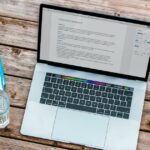
15 Great Books on Proofreading and Editing
Becoming an outstanding proofreader and editor takes work and training – but you knew that already! Reading books on proofreading and editing is a handy way to further refine your craft. Here are 15 great choices to add to your list of essential resources.
Grammar and Punctuation Guides
Grammar and punctuation guides look at how the English language works. They won’t always give definitive answers (style is subjective, after all). But looking at what other writers have to say about English will help you make smart choices for your clients.
In particular, for advice on grammar and punctuation, we recommend:
1. Dreyer’s English: An Utterly Correct Guide to Clarity and Style by Benjamin Dreyer
In Dreyer’s English, Benjamin Dreyer, copy chief for Random House Publishing, shares his witty insight into the English language. This includes the rules and non-rules of grammar, confusables (easily confused words), punctuation practices, and more.
2. The Best Punctuation Book, Period by June Casagrande
Based in American usage (but helpful to all), this book aims to help readers to punctuate with confidence – no matter the style. Covering several major styles, this book will help you make informed editing choices and look up general punctuation rules.
3. The Penguin Guide to Punctuation, by R. L. Trask
There are, of course, differences in punctuation usage between American and British English, so if you’re editing or proofreading in British English, this handy little book with its friendly style will guide you through.
4. Practical English Usage by Michael Swan
Swan’s book is especially useful for those working on materials for non-fluent speakers of English. It explains grammar, punctuation, and other aspects of English usage in clear, simple terms.
Language and Style
5. The Chicago Manual of Style: The Essential Guide for Writers, Editors, and Publishers (CMOS)
Now in its 18th edition, this style bible used to focus on nonfiction but has been expanded over the years to include fiction and the needs of self-published authors. It covers topics such as pronoun use, capitalization, Indigenous languages, and making publications accessible to people with disabilities. You can also subscribe to access the guide online.
6. New Oxford Style Manual
Now in its third edition, this book might look hefty, but it includes two volumes in one: New Hart’s Rules, which covers similar ground to CMOS but from a British English perspective, and New Oxford Dictionary for Writers and Editors, which is an indispensable reference for spelling choices if your style guide uses British English.
7. The Conscious Style Guide: A Flexible Approach to Language that Includes, Respects, and Empowers by Karen Yin
The subtitle to this book, which was published in 2024, emphasizes the purpose of this guide: to identify language that could cause offense and to help you suggest better alternatives. There’s also a host of up-to-date resources available on the Conscious Style Guide website.
The Craft of Editing and Proofreading
So much goes into editing and proofreading beyond knowing the ins and outs of language. These books, for example, also cover everything from client relations to marketing:
8. The Copyeditor’s Handbook by Amy Einsohn and Marilyn Schwartz
The Copyeditor’s Handbook is filled with information on editing ethics and best practices, using technology in editing, and more. There is also a helpful workbook and handbook set for a more intensive learning experience. And while it mainly focuses on American English, its advice on modern editing techniques will be useful for anyone.
9. The Subversive Copy Editor: Advice from Chicago (or, How to Negotiate Good Relationships with Your Writers, Your Colleagues, and Yourself) by Carol Fisher Saller
The full title of this gem may be a mouthful, but The Subversive Copy Editor is an extremely handy guide to the practical side of copy editing. It offers guidance on working with writers, workflow management, and other challenges faced by freelance editors.
10. Butcher’s Copy-editing: The Cambridge Handbook for Editors, Copy-editors and Proofreaders by Judith Butcher, Caroline Drake, and Maureen Leach
Butcher’s famous book is known as the “copy editor’s bible.” And while the fourth (and most recent) edition came out in 2006, it’s still an informative resource for the copy-editing process. The chapters take you through the general steps involved – including house style, references, and preparing text for the typesetter – together with some more specialist areas – such as multi-author works, literary material, and math books.
11. Copyediting and Proofreading for Dummies by Suzanne Gilad
This book is a useful reference point for basic proofreading and editing practices. It also contains helpful information on the business side of proofreading and editing.
12. The Chicago Guide to Copyediting Fiction by Amy J. Schneider
Fiction editors can feel a little sidelined, despite the emergence of fiction topics in some editing and proofreading books, so Schneider’s book will be a welcome addition. It covers the process of copy editing a novel (including the “bonbon pass”), building a style sheet, and editorial issues specific to fiction.
Just for Fun
We encourage our course graduates to be curious about the English language. Thus, as well as reference books, it’s worth reading books that feed this curiosity, such as:
13. The Prodigal Tongue: The Love–Hate Relationship between British and American English by Lynne Murphy
In The Prodigal Tongue, dual American–British citizen Murphy examines the subtle, unending competition for superiority between the American and British dialects as well as how the language has evolved through this struggle.
14. Playing with Words: Humour in the English Language by Barry J. Blake
This little-known book delves into how we use the English language to make people laugh. Playing with Words takes the very things that drive proofreaders and editors insane and shows how these misuses of language are often at the core of humor and wit.
15. Anguished English: An Anthology of Accidental Assaults upon Our Language by Richard Lederer
Anyone working in the world of editing and proofreading will appreciate the hilarious examples of misused language in Anguished English.
No Books Necessary!
The fifteen books on proofreading and editing above will be great additions to your library – and will certainly look impressive – but if you don’t have the shelf space, you’ll have seen that a number of those on our list include digital versions and online resources.
And in case you think we’ve missed the most obvious category of proofreading and editing resource – dictionaries – check out our related post on online dictionaries.
Becoming A Proofreader or Editor
To master proofreading and editing, you can’t beat professional training. Take one of our online courses, Becoming A Proofreader or Becoming An Editor, to learn all the skills you need to start a new freelance career. If you’re not sure which one is for you, you can sign up for a couple of free lessons. Or you could buy both courses as a bundle and save 15%!





Your email address will not be published.